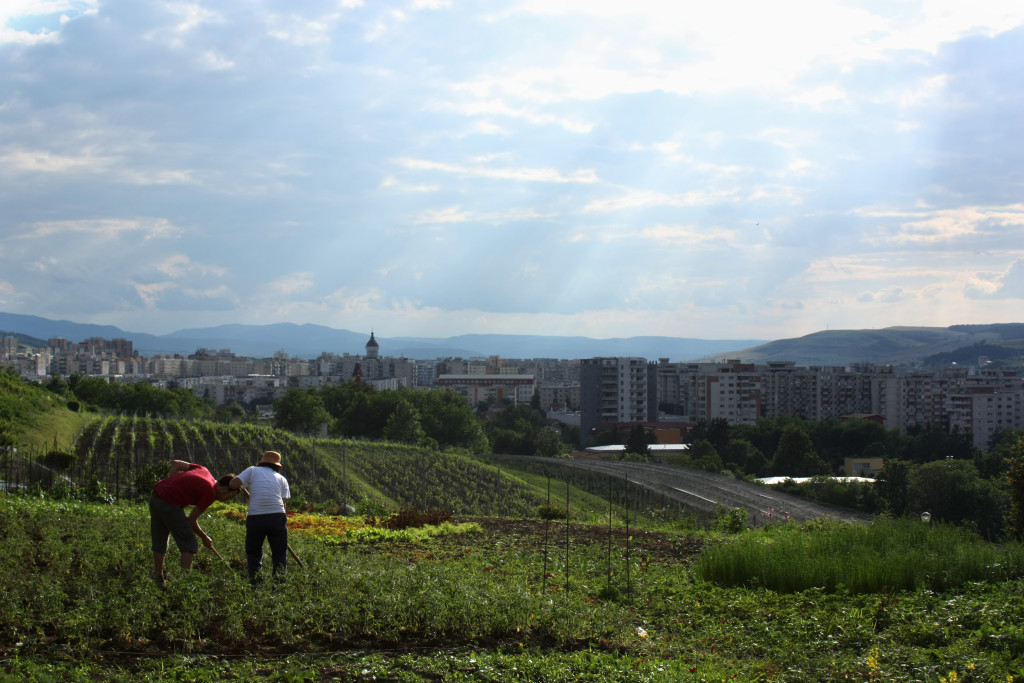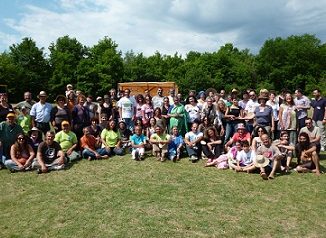
Seeds are the bedrock of our agricultural systems. Plant varieties bred out of them determine the successes and failures of our food systems. Throughout the history, the mismanagement of genetic resources led to catastrophic events, like the Irish Great Famine (1845-1852) or the Bengal famine (1943). Taking action, Governments and Inter-Governmental Organizations established Gene Banks throughout the world, making sure that plant varieties and unique traits like adaptation or crop resistance are not forever lost.
France and Romania both own national gene banks, but are they accessible to peasants, and adapted to their needs? How could the peasants assert their autonomy on seeds?
The national gene banks from each country, perform the activities of collecting, evaluating and conserving plant genetic resources, financed from the national budget. Their original objective is to insure food security by conserving potential plant resources. Unfortunately, these are almost always used by seed breeders to create new, patented, non-reproducible varieties. In Romania, one institute takes the lead of seed conservation, the Banca de Resurse Genetice Vegetale Suceava conserving 18000 samples of grains, legumes, potatoes, medicinal plants, herbs, fodder and ornamental plants, including several local populations (especially for corn, where 4700 of the 6700 samples are local varieties).
In France, the situation is different: the national gene banks are spread over the country, managed by the INRA centers which are more able to work on these plants, for example the INRA of Corsica which accommodates the citrus gene bank. These groups, gathering 90000 samples of plants from France and tropical countries, are under the aegis of the FRB, the Foundation for the Research on Biodiversity. Even if the work on seeds is more relocated, it is still gathered by the research and the breeders, not the peasants. And the seeds are still more often in cryobanks than in the fields.
The gene banks insist on their aim to conserve seeds, but, in reality, it appears that their way of doing it is through the conservation of samples in cryobanks. Cultivation in experimental fields concerns only a few varieties, for example old potato varieties in the Suceava gene bank. Many times, they also mention that this “biological material” is not available for distribution. Even if some samples from the storage are officially available for farmers, they are not registered in official catalogs, thus cannot be used for commercial purposes and for food production.
As they cooperate with seed companies, the gene banks do not feel responsible for distribution of seeds to their prime users, the peasants. Thus, the peasant is not taken as a stakeholder of the plant breeding and the seed conservation and production. But, as the choice of seeds influences the type of agriculture, of landscape, of environment and of food, it is hypocritical not letting this choice, this right to the peasants. It is essential to put the peasants in the heart of seed conservation and to esteem the social role of seeds: they allow people to produce food, to share knowledge and traditions, and to be independent from any corporate dependence.
Creating a framework in which peasants can cultivate, preserve and exchange their own seeds, really adapted to their environment could be a solution. In France, a dynamic in this direction has appeared in the last years: a network of some 40 peasant Seed houses – “Maison de Semences Paysannes”. Rather than gene banks, Seed houses prefer considering themselves as “collective organizations of the management of cultivated biodiversity”. They follow the aim of preservation and multiplication of local varieties to make them available to the peasants and gardeners who feel concerned with adapting their cultures to their environment. These breeders, peasants, and above all gardeners, follow an ethic chart based on transparent and fair income and on an agroecological-based production. The seeds can be population varieties, reproducible by everyone, are not limited by the official catalogue, and not submitted to any intellectual property rights. Supported by the biggest seed network in France for peasants, “Réseau Semences Paysannes”, their aim is also to construct a coalition for worldwide advocacy for peasant seeds.
In Romania, the increasing pressure on land and on traditional farming may make difficult the building of a peasant community seed management initiative. Nevertheless, the highest number of peasants and their diversified culture represent a huge potential. Like the Maisons de Semences Paysannes, the strength of a Romanian alternative for a shared seed management will come from a solid network between committed peasants and gardeners and from local and solidary actions. The need of cultivating on small, hand-worked surfaces, in different pedo-climatic conditions, is especially appropriate to the Romanian agriculture. Through the organization of seed exchanges, local propagating programs at the request of peasants and shared harvesting-sessions, a real alternative to the impermeability of the current seed system could be created.
With the goal of revitalizing the cultivated biodiversity in Romania, the association Eco Ruralis collects traditional seeds from Romania and foreign countries, multiply them in its garden and spread them around to Romanian peasants and gardeners. It permits not only seed exchanges, but also for the peasants to get aware of the practices of the others, of the network they are involved in and of the value of their work regarding our whole food system.
Article written by Lena Haun, Agrobiodiversity Campaigner Intern at Eco Ruralis
For an animated version of Eco Ruralis’ seed saving, see below






I think this gives a wrong impression of the work of genebanks. I’ve blogged about it here http://agro.biodiver.se/2015/07/genebanks-and-farmers/